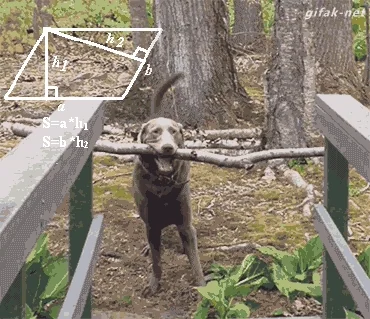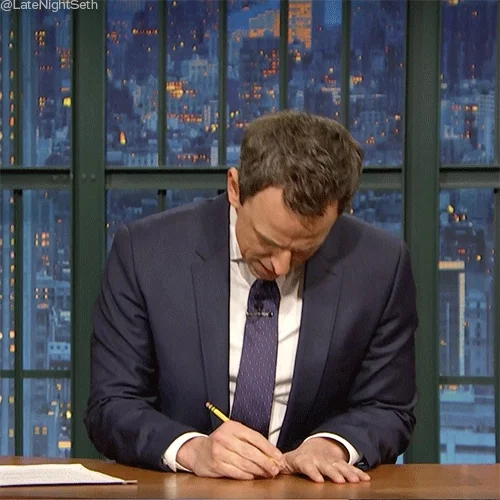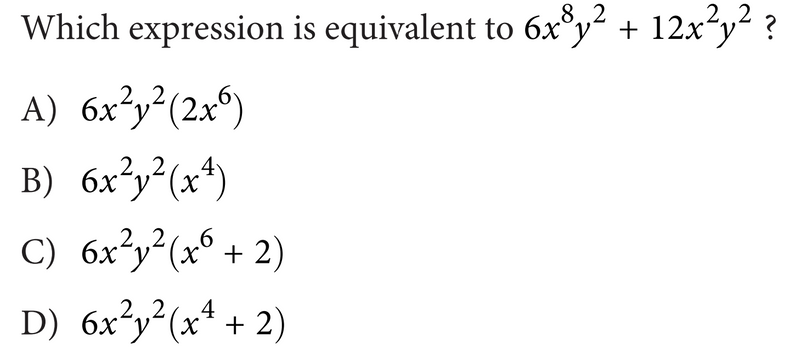
Do you struggle with SAT Math questions?
Don't worry, you're not alone!
The average SAT test-taker usually performs lower in the Math section than English/Reading/Writing (ERW) section. In 2023, the average SAT Math score was 508 while the average SAT ERW score was 520.
"But I'm not a mathperson," you say.
Doing well in math is more about practice than natural talent. By following these 3 strategies, you can answer almost any SAT Math question, no sweat!
Strategy #1: Dissect the Question

Math word problems can be wordy and hard to understand. But if you break the problem in parts, it's easier to solve!
Example SAT Math Question
Bacteria are growing in a liquid growth medium. There were 300,00 cells per milliliter during an initial observation. The number of cells per milliliter doubles every 3 hours. How many cells per milliliter will there be 15 hours after the initial observation?

Step 1: Read through the question once more.
Try reading it out loud.

Step 2: Highlight key information.
Initial number of cells: 300,000
Rate it increases: rate is exponential (it doubles every 3 hours)
Total time elapsed: 15 hours

Step 3: Identify the goal and method to solve.
Usually, the goal is stated in the last sentence of the question. In this case: "Find the number of cells there will be after 15 hours after initial observation."
Notice this is an exponential growth problem.

Step 4: Solve the problem
You know that the number of cells double every 3 hours. You need to find how many times (a.k.a the "period") it does that. 15 hours divided by 3 hours per period = 5 periods.
You can use the exponential growth equation but if you don't remember this equation, you can solve it by period:
Period 1: 300,000 * 2 = 600,000
Period 2: 600,000 * 2 = 1,200,000
....
Period 5: 4,800,000 * 2 = 9,600,000 cells per milliliter
Your Turn!
For the SAT Math question below, select the correct goal AND method.
Circle A has a radius of 3n and circle B has a radius of 129n, where n is a positive constant. The area of the circle B is how many times the area of circle A?
A. Goal: Find how many times circle A's area is compared to circle B, Use the circumference equation.
B. Method: Use area of a circle equation and find the ratio between the two.
C. Goal: Find how many times circle B's area is compared to circle A's.
D. Method: Use circumference equation and find the ratio between the two.
Quiz
Select the goal AND method for the above question:
Strategy #2: Process of Elimination

A majority of SAT Math questions are multiple-choice, so you have a 25% chance of picking the right answer. But you can be 100% sure you'll pick the right one by using the process of elimination.
Example SAT Math Question
A school club is paid $315 for recycling c pounds of aluminum cans and p tons of paper. The equation 0.50c + 60p = 315 represents this situation. What is the interpretation of 60p in this context?
A. The total weight, in tons, of paper the club recycled.
B. The total amount, in dollars, the club is paid for each ton of paper recycled.
C. The total weight, in tons, of all the aluminum cans and paper the club recycled.
D. The total amount, in dollars, the club is paid for p tons of paper recycled.
Step 1: Re-read the question and identify what it's asking for.
This question is not asking you to solve the equation, but rather interpret the equation. It's asking you to break down the equation and define each part. Specifically, what does "60p" mean in this equation?
Step 2: Scan the first answer choice for errors.
Answer A says 60p means the total weight, in tons, the paper the club recycled. You know that the equation result's unit in dollars, so 60p must be a unit in dollars, not weight! You can cross this answer choice out.
Step 3: Repeat step 2 for the remaining answer choices.
You can cross out answer C since that also claims 60p is the total weight, which leaves B and D
The difference between B and D Answer choice B says for each ton of paper, we get $60. However, the question provides that the school club is awarded money for "p tons of paper", where p is an unknown constant. Therefore, 60p represents the total amount in dollars for every p tons of paper, so we can choose answer D.
Your Turn!
Use the process of elimination to solve the SAT Math question below:
 To hear an audio description of the SAT Math question above, click play on the audio player below:
To hear an audio description of the SAT Math question above, click play on the audio player below:
Quiz
Select the correct answer to the question above:
Strategy #3: Plug in Answers

Sometimes, plugging in the answer choices to see what works can lead you to the correct answer. It's a good thing the majority of the SAT Math questions are multiple choice!
Example SAT Math Question
Last week, Raul worked 11 more hours than Angelica. If they worked a combined total of 59 hours, how many hours did Angelica work last week?
A. 35
B. 40
C. 24
D. 48
Step 1: Read through the question and highlight what the question is asking for.
In this case: How many hours did Angelica work last week?
Step 2: Gather important information.
Raul works 11 more hours than Angelica.
Total combined ( Raul hours + Angelica hours) is 59 hours.
Step 3: Start with the first answer choice.
Start with A. 35 hours. If Raul worked 11 more hours, that means he worked 35+11 = 46 hours.
Add Raul and Angelica's hours: 35 hours + 46 hours = 81 hours. This answer choice is incorrect!
Step 4: Move on to the next answer choice if the previous one doesn't work.
Try working out answer choice B. 40 hours. 40 hours + 11 hours = 51 hours --> 51 hours + 40 hours = 90 combined hours. Incorrect!
Try working out answer choice C. 24 hours. 24 hours + 11 hours = 35 hours --> 35 hours + 24 hours = 59 hours. Correct! The answer is C.
Your Turn!
Use the "plug in" method to solve the SAT Math question below:
A website-hosting service charges businesses a one-time setup fee of $350 plus d dollars for each month. If a business owner paid $1,010 for the first 12 months, including the setup fee, what is the value of d?
A. 25
B. 35
C. 45
D. 55
Quiz
Select the correct answer to the question above:
Take Action

Congrats! You learned effective strategies to solve SAT Math questions. But learning doesn't stop with this Byte:
Your feedback matters to us.
This Byte helped me better understand the topic.
